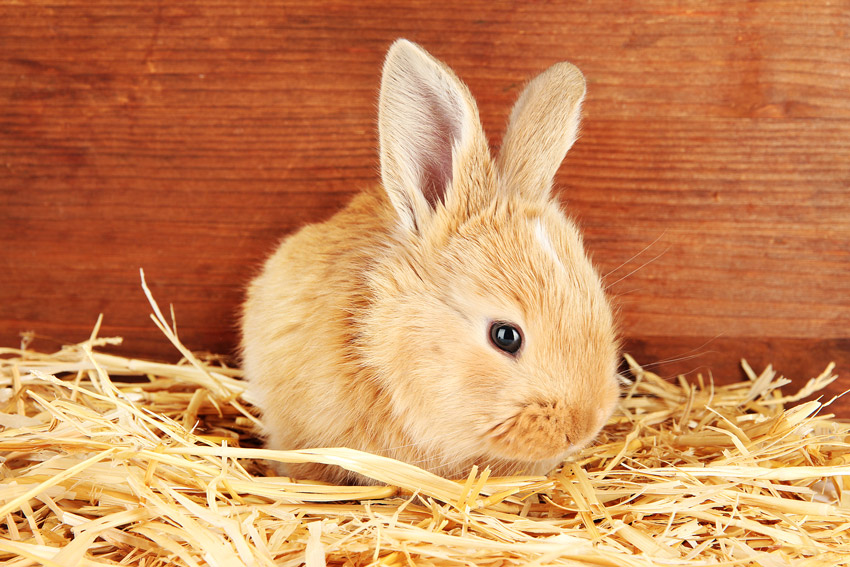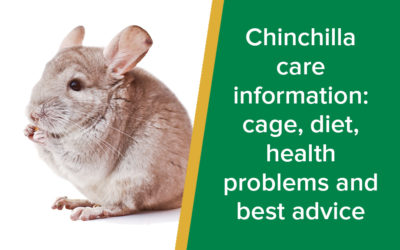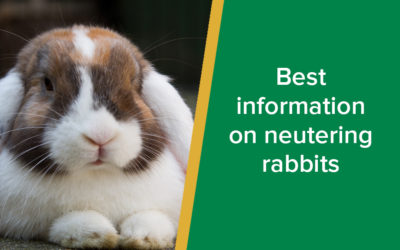Rabbits are a very common pet nowadays, with many being kept as litter trained house rabbits. With some work and knowledge they make really friendly fun pets, but they are not an ideal first pet for young children as they need quiet, patient handling and minimal stress. They are a prey species, so loud noises, too much handling or rough handling can make them very scared, which may cause them to bite or scratch from panic, as well as make them prone to stress related illness.
Rabbits come in a vast variety of sizes and colours, and can live over 10 years. They are highly social animals so MUST be kept with another rabbit – if kept alone they can become very stressed. Rabbits become sexually mature from 16weeks, so if keeping a male and female together, they must be neutered. Rabbits can form bonded pairs, and become devoted lifelong friends.

Rabbit Housing
Traditionally rabbits were kept in small hutches but this is now unacceptable. They are energetic and intelligent animals who need space to run and play, forage and socialise. According to the Rabbit Welfare Association and Fund (RWAF), a minimum area for 2 rabbits together is 3m x 2m base and 1m high, whether indoors or outdoors. Many indoor rabbits get free run of a room in the house, and outdoor runs can be very large.
All rabbit housing must be secure – to prevent escapes and (when outdoors) to prevent access by predators. There must be a part that is dry and draught free, sheltered from weather and extremes of temperature, and away from loud noises. Rabbits should have an enclosed safe sleeping area with straw, hay or compressed paper bedding, and in their runs have space to run, jump, dig and hide, as well as toilet/litter areas. Digging is a natural behaviour in rabbits which they should be allowed to carry out – you can provide a deep litter tray or pot filled with earth or sand. Tunnels, tubing and cardboard boxes can be added to runs to provide enrichment. Rabbits love to chew, so any wooden parts of the run should be checked regularly, and alternative chew toys or fruit wood branches can be supplied. Whether indoors or outside, the area needs to be rabbit proofed – both to prevent escape and to remove anything that the rabbit may eat – poisonous plants and electric cables being important examples.
For full details of indoor or outdoor housing the RWAF website is extremely helpful – https://rabbitwelfare.co.uk
Rabbit Diet
A healthy diet is one of the most important parts of your rabbit’s care. An inappropriate diet can lead to obesity, digestive issues and dental problems. Rabbits in the wild spend a long time grazing and foraging for mostly poor quality food, and eat mainly grass. They need long fibre in their diet for their guts to work properly, and constant chewing is required to keep their teeth worn down, as rabbits’ teeth grow continuously throughout life.
A good diet for your bunny would be:
- 85% grass or hay
- 10% leafy green vegetables
- 5% nuggets
- Unlimited fresh water
So ideally this would be: unlimited good quality hay or grass (not alfalfa, no lawnmower clippings or frosted grass), a large handful daily of broccoli, kale, parsley, dandelion leaves or cabbage, and 2-3 tablespoons of commercial rabbit nuggets daily. Muesli type mixes are not ideal as your rabbit will tend to pick out the high sugar parts and leave the high fibre parts, contributing to obesity and digestive problems.
Remember that sudden changes to the diet can cause serious tummy problems which can be life threatening, so any new foods should be introduced very gradually.
Health problems
As a prey species, rabbits tend to hide signs of pain or illness. It is vital to monitor your rabbits every day for any changes in appetite, droppings, activity and normal behaviour as reduction in any of these can be a sign of illness or stress.
Health problems that we see in rabbits are
- Dental disease – from poor diet or conformation. Teeth can grow too long and cut into the tongue or gums which is extremely painful. Signs can be poor appetite (or eating only soft food, not hay), fewer droppings, a dirty bottom, wet mouth and forepaws, weight loss and reduced grooming. It is important to contact us if you are worried about your rabbit’s teeth so we can treat this as quickly as possible.
- Gut stasis – this is when the normal movements in the gut reduce or stop and can be life threatening. It can be due to a change in diet, stress or pain, inadequate exercise, dental disease or other illness. Your rabbit will stop eating and passing droppings, and will be quiet and often hunched. If you suspect gut stasis then bring your rabbit in to see us straight away.
- Flystrike – in the warmer months flies can lay eggs on dirty or wet areas of the rabbit, which hatch into maggots which can then bury and eat into the rabbit’s flesh. In ill rabbits, or those with dental disease or arthritis, who have dirty bottoms because they cannot groom, the area around the bottom becomes smelly and wet, which attracts flies. Flystrike can happen quickly and often the rabbits will show few signs until the problem is far advanced, and is beyond control. It is often fatal. Preventative measures include fly repellants, keeping bottoms clean, regular checks in warm weather and treating underlying diseases. Please discuss this with any of our vets if you are worried.
- Obesity – from poor diet or lack of exercise. Although not a disease, obesity can predispose to lameness, sore hocks, flystrike and poor coats
- Parasites – an itchy or scurfy coat may be a sign of mites, fleas can carry disease like myxomatosis. Treatment for parasites is available.
- Cuniculi – this is an internal parasite which can affect many of the organs. Most often we see nervous system signs in rabbits – head tilt, rolling, or paralysis, although blindness and urinary problems are also common. By the time your rabbit shows signs, it can be difficult to treat. However regular worming and good hygiene are important ways of preventing this nasty disease.
Vaccinations
We recommend vaccinations for Myxomatosis and Rabbit Viral Haemorrhagic Disease (RVHD).
Myxomatosis is a viral disease spread via fleas or other biting insects from infected rabbits, or direct contact with infected rabbits. You may have seen infected wild rabbits with myxomatosis – they have swollen weeping eyes, nose and genitalia, cannot see and move very slowly. They progress to fever and an inability to eat or drink. The majority of rabbits will die as there is no specific treatment. Prevention is easy in the form of a yearly vaccine, combined with RVHD1.
RVHD1 is a virus prevalent in wild rabbits which is rapidly fatal. Many rabbits show no signs of illness but are found dead, often bleeding from the nose or mouth. The cause of death is internal bleeding. It is caught from direct contact with infected rabbits, or contact with infected urine or faeces. There is no treatment for RVHD1, but the vaccine is a very effective way of preventing the infection.
RVHD2 is a relatively new strain in the UK, again often causing sudden death. However the number of deaths is less than RVHD1, and some infected rabbits can recover. Due to the lack of signs, it can be very difficult to diagnose and has probably been widely underdiagnosed. It is again caught by direct contact with infected rabbits, via infected material in the environment or contact with carrier rabbits. The RVHD2 vaccine is very effective.
A combined Myxo/RHD1 vaccine is recommended annually, and an RHD2 vaccine should also be given yearly, although the two vaccines cannot be given at the same time – please contact us for further details. It is important also to treat fleas on your rabbits, and to prevent contact with wild rabbits.


